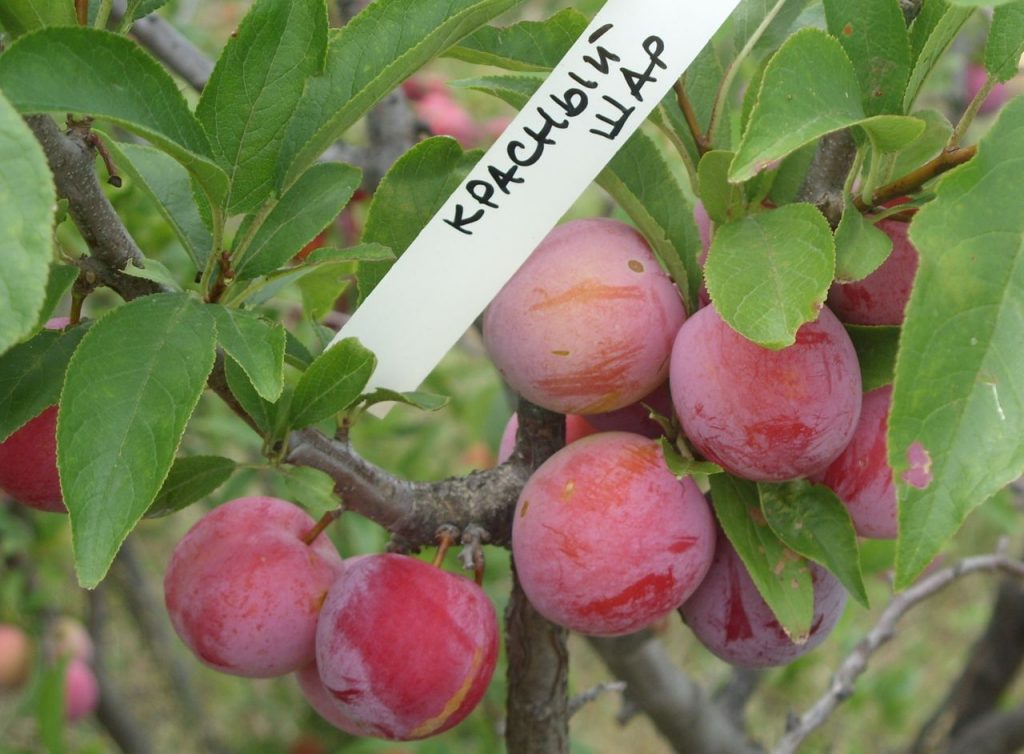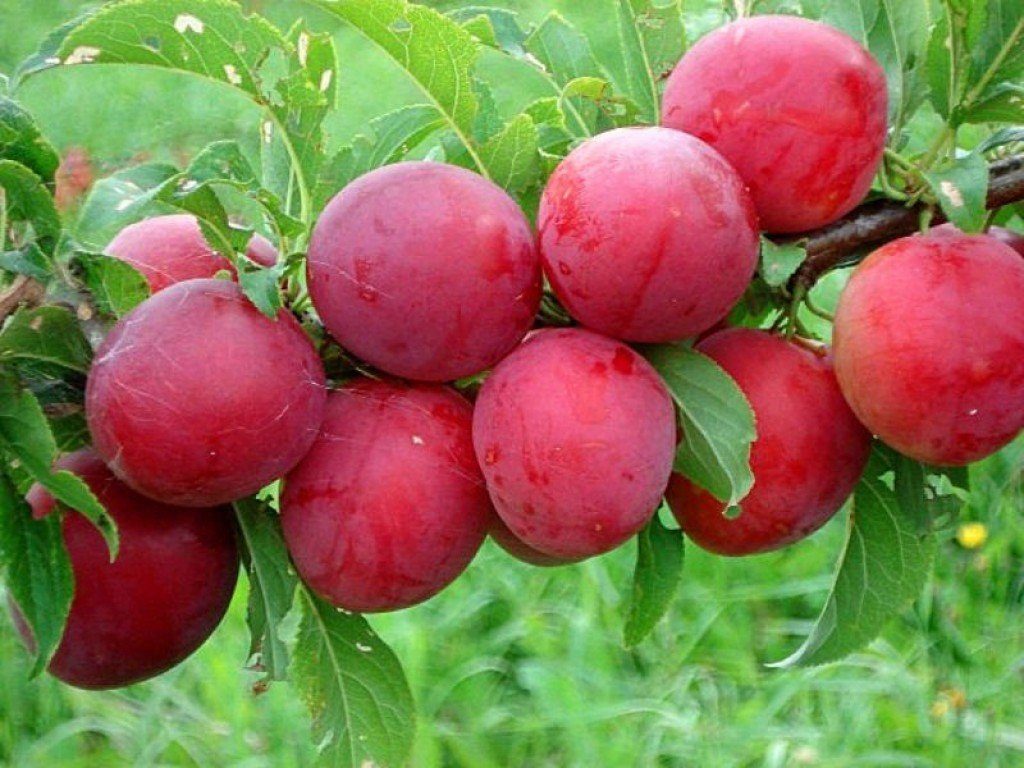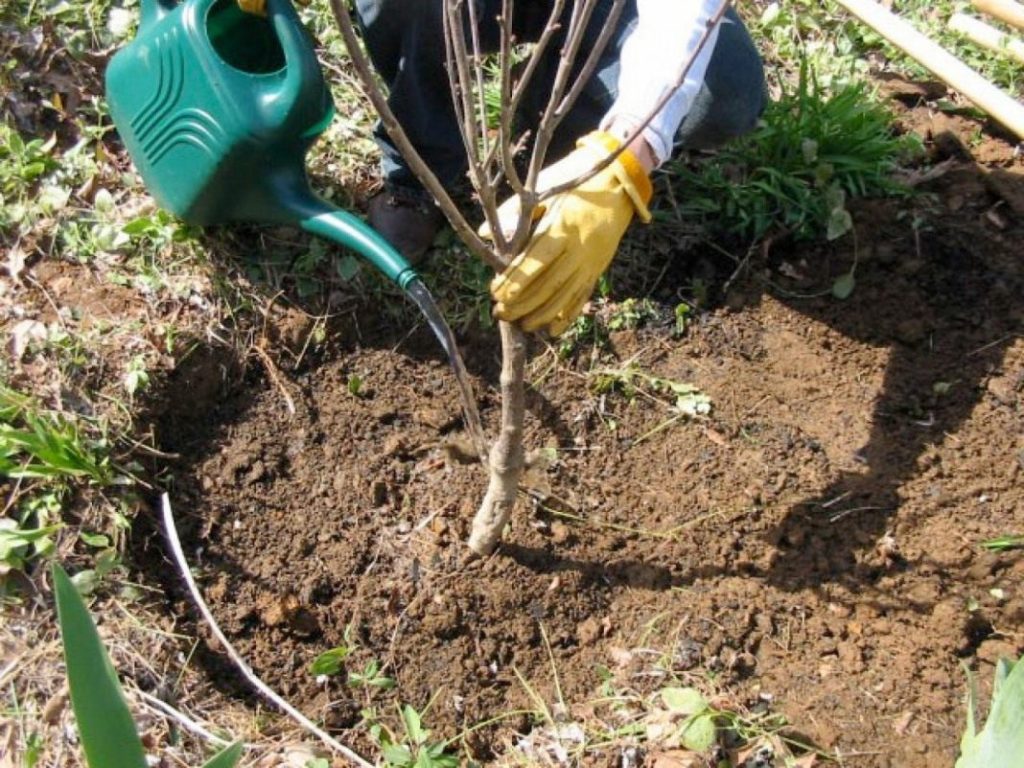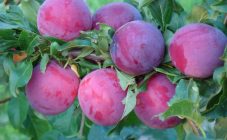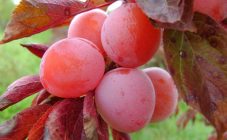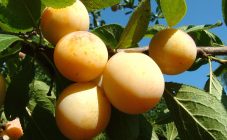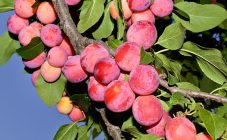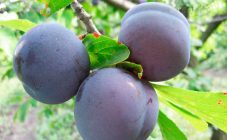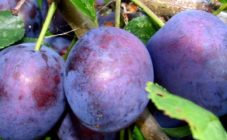Content:
Chinese plum is a woody fruit plant belonging to the Pink family. Trees can reach a height of 12 m. They have a purple-brown bark. White flowers are collected in umbellate inflorescences. The fruit is a drupe of red, yellow, purple color, reaching a diameter of 5 cm. The article will consider the Red Ball plum, features and description of the variety, agricultural technology, pros and cons of the variety.
The history of the creation of the variety
One of the popular varieties of Chinese plum is the Red Ball (Raspberry Ball). It has a medium early ripening period. Plum Raspberry ball - a hybrid obtained by crossing the varieties Burbank and Ussuriyskaya red. Was brought to VSTISP, Moscow. The authors are scientists Kh. K. Enikeev and SN Satarova. He got to the test in 1987 and after 2 years he was allowed to grow in the Central region.
Characteristics of the variety
Trees of medium height have a drooping crown of medium density. Plums are found on annual shoots and fruit twigs. Medium-sized concave leaves have a characteristic green color, serrate at the edges. The shape is oval-lanceolate. The central vein stands out strongly.
Flowers with five petals are white or pinkish. The peculiarity of the tree is that in spring it has no leaves, only flowers. It is very beautiful and many gardeners grow this plant solely for decorative purposes.
The fruit is a drupe weighing 35-40 g. The size of the plum is large enough, resembling an oval in shape. The abdominal suture is practically invisible. The skin is dense with a waxy coating. The color of the fruit is different: the main color is yellow-green, and the integumentary color is red.
Juicy and aromatic pulp is located behind the skin. It tastes sour, slightly fibrous. The color of the ripe fruit pulp is light yellow, the stone is small.
Pollination is spontaneous - the plant is pollinated by itself and does not need others.
Plum The red ball begins to bloom 2 weeks earlier than normal plums. The fruits ripen in mid-August. With favorable summer weather, there are many fruits that literally stick around the entire branch.
The variety has high frost resistance, withstands up to -35 ° C. Plants are demanding on light and heat.
The variety is resistant to such a disease as clasterosporium disease. Trees easily tolerate sunburn, but they cannot resist rust, moniliosis, coccomycosis, root cancer.
Among the pests, the greatest harm is caused by plum aphids, apple moth, ringed silkworm, and cherry slimy sawfly. If pests or symptoms of diseases are found, it is urgent to take measures to exterminate them.
Landing
To get the first harvest from the Raspberry Ball plum, you need to go through several stages:
Site preparation
Before planting seedlings, you need to choose a place and prepare it well. It should be well lit, since the plum is very thermophilic. The rows (if there are several seedlings) should be placed at a distance of 3-3.5 m, and the plant between the trees 2-2.5 m.When choosing a site, you need to take into account the influence of a strong wind, because the plum does not respond well to drafts, so there should be a place for planting protected from the winds. You can, for example, plant seedlings next to a wall that will protect from the wind, and also give off heat when heated.
Seedlings can be grown on almost all types of soil, except for strongly acidic ones.The most suitable are light sandy loam and wet loam. It is impossible to plant a drain in places where the groundwater level is at a distance of 1.5 m or less. Deeply penetrating roots will start to rot and the plant will wither and then die.
The best time to plant plums is spring. You can start a week after the snow melts. In the south of Russia, where a warm climate prevails, it can be planted in the fall.
Tips for buying seedlings for planting:
- you need to choose an annual, as it will take root better;
- the roots should be slightly damp, it is better not to purchase seedlings with a dry root system;
- no damage;
- the cut wood should be white or light green.
The hole is dug 20 days in advance before planting. The depth, width and length should be 70 cm each. The landing site should be dug up. If the soils are acidic, then dolomite flour is added. A support is installed in each hole, and a mixture of fertile soil, peat, rotted manure and humus is poured onto the bottom. The peg should be 70 cm above the soil surface.
Landing
Having prepared the place, you can start the very process of planting the plant. Before sending to a permanent place, you need to place the roots of the seedling for 5 hours in water. This will stimulate their growth. Potassium permanganate solution can be added to the water to disinfect the roots.
A seedling is placed on a hill formed in a hole of various nutrients. The roots are straightened and covered with a mixture of bad soil and fertilizers. Ash, superphosphate, potassium nitrate are suitable as top dressing. The root collar should rise 5-6 cm above the soil surface. Then the soil must be trampled to prevent air from entering the soil, which will negatively affect the roots.
Then an earthen wall is formed at a distance of 50 cm from the trunk. The plant is watered abundantly (8-10 liters per plant). When the soil absorbs moisture, it needs to be mulched (2 cm layer). Peat is suitable for this. The next watering should be done in 2 weeks or a little earlier.
Further care
In general, care consists in watering, loosening, feeding, pruning. It is very important to remove weeds by weeding and loosening. But this should be done carefully, since the roots are too close to the surface. You need to loosen it before watering, which is recommended in the morning and evening. Plants require a lot of moisture. But you shouldn't overdo it.
Dry soil is also harmful to plants. The critical period for water consumption is June or July. At this time, the ripening of the fruits begins and the laying of flower buds for the next year. If there is not enough water, then the fruits will crack. In August, watering is reduced. After harvesting, the trees should be watered abundantly for 2 weeks. This is important for overwintering.
The variety does not need crown formation, as it is not too dense. Only sanitary and preventive pruning is carried out and root growth is removed. In the spring, branches that have frozen over the winter are removed. Old shoots are shortened by a quarter. In the fall, tops and branches affected by pests and diseases are removed. All sections must be covered with garden varnish to prevent infection.
The variety is not picky about fertilizers. Top dressing is carried out only in the fall once every 3-4 years. Urea can be added before flowering.
Advantages and disadvantages of the variety
Variety advantages:
- transportability of large fruits with a dense skin;
- high yield: about 15 kg of plums can be harvested from a tree;
- early ripening of fruits 2 or 3 years after planting;
- average thickening of the crown;
- decorative type of plant;
- the tree is able to withstand severe frosts.
Disadvantages of the variety:
- taste is average, there is a sour taste;
- early flowering, in ordinary plums it begins much later, so the flowers run the risk of crumbling due to low temperatures;
- the presence of pollinators. Although the variety is considered self-fertile, other varieties must be planted to guarantee flowering.
Many gardeners do not know anything about the Chinese plum, so they mainly plant the Home plum. The Raspberry Ball variety is a hybrid of the Chinese plum, which has a lot of positive qualities. He is unpretentious to environmental conditions. Growing this variety, you can get a large harvest already 2 or 3 years after planting. In addition, the trees bloom very beautifully and can decorate any garden.
